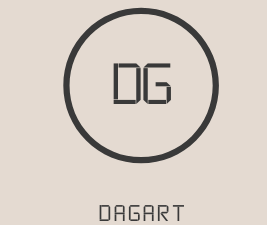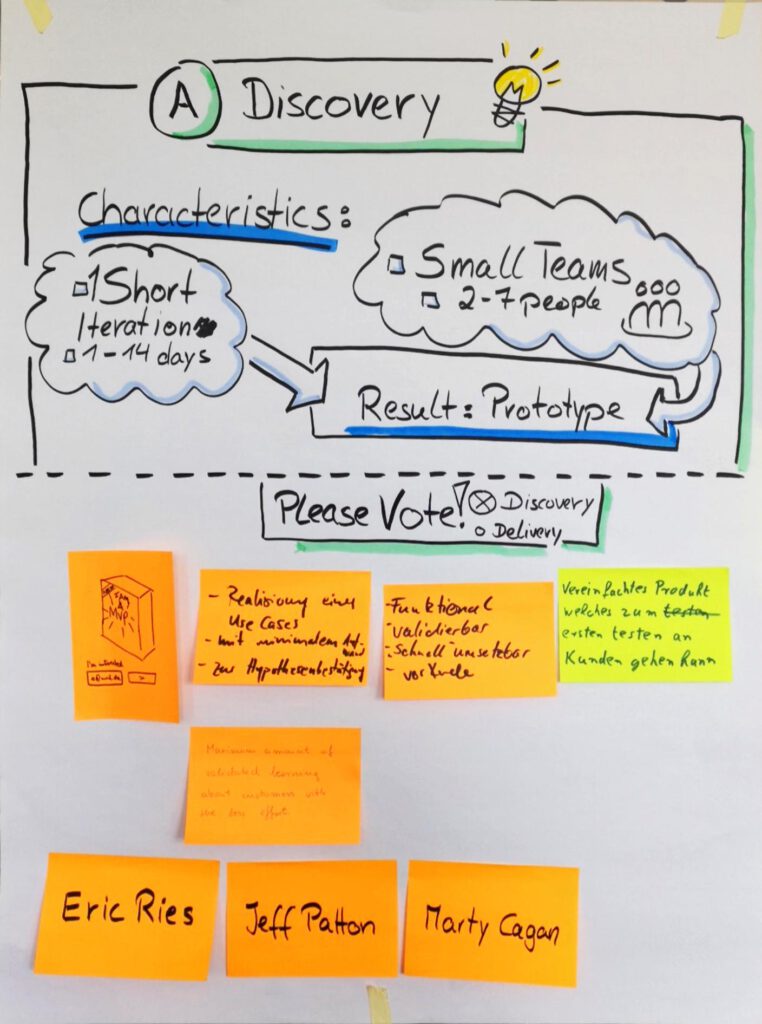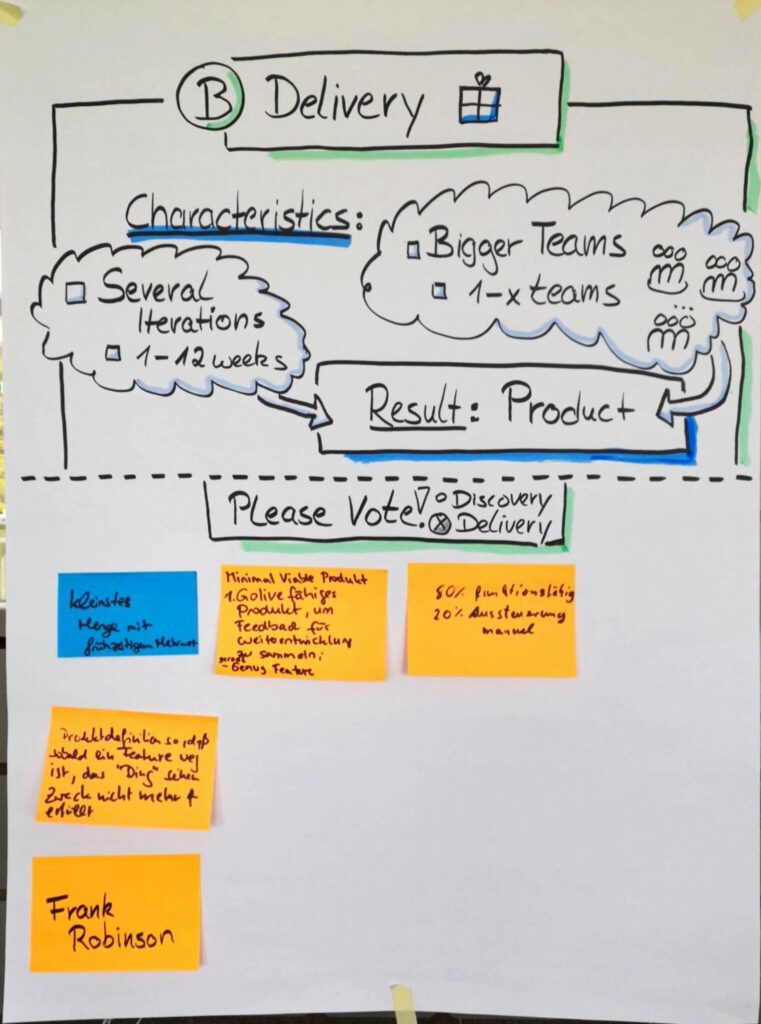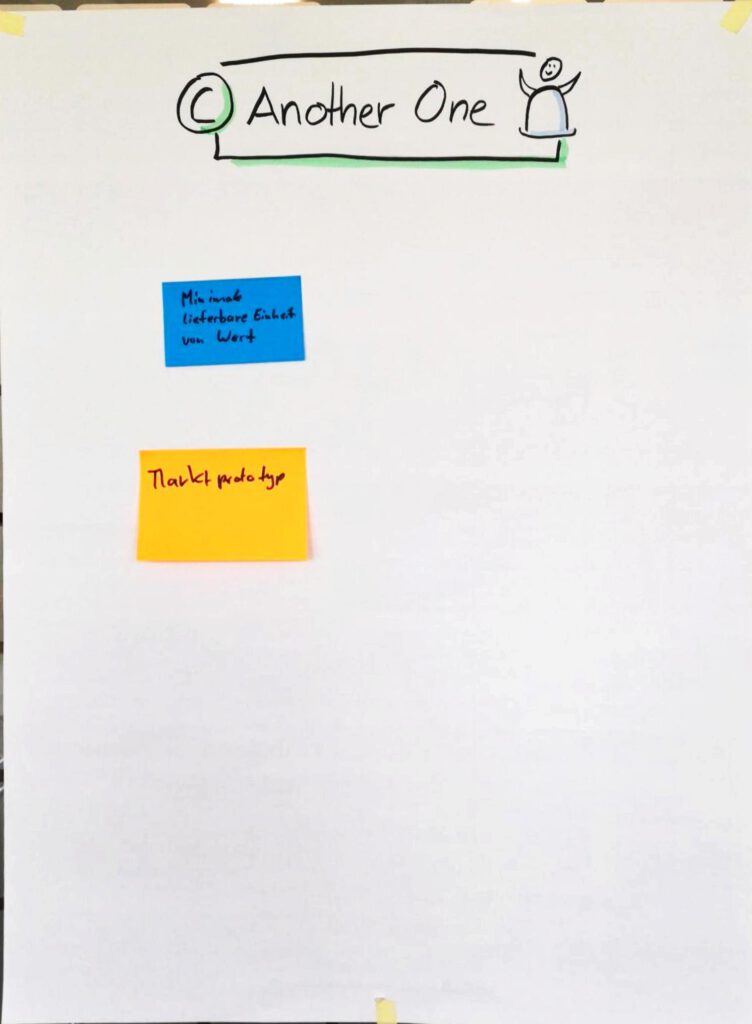In this article, I share my thoughts on the extent to which it is useful or not to find the perfect definition for an MVP (Minimum Viable Product) and suggest how to deal with the term MVP in the work context.
Let’s start with a first definition
Eric Ries: Das Minimum Viable Product ist diejenige Version eines neuen Produkts, mit der ein Team mit dem geringsten Aufwand die maximale Menge an validiertem Lernen über Kunden sammeln kann”
https://en.wikipedia.org/wiki/Eric_Ries
Trying to find the perfect definition!
When I started working as a developer in a Scrum team in 2011, it wasn’t too long before I came into contact with the term MVP. I did some research and someone recommended that I read the book “The Lean Startup” by Eric Ries. While working in different environments and roles in the agile context, I got into (heated) discussions a few times about what an MVP really is, but I could rarely convince my counterpart that “my” definition was the right one.
Is there a perfect definition?
To get a better understanding, I read more books on agile product management and product innovation. Over time, I read Jeff Patton’s wonderful book User Story Mapping, Ash’s Maurya Running Lean and Marty Cagan’s Inspired. The more books I read, the more I realised that there is no perfect definition for the term MVP. Read four more MVP definitions for this:
Jeff Patton:
https://www.jpattonassociates.com/user-story-mapping/
The minimum viable product is the smallest product release that successfully achieves its desired outcomes.
The minimum viable solution is the smallest solution release that successfully achieves its desired outcomes
A minimal viable product is also the smallest thing you could create or do to prove or disapprove an assumption”
The MVP is the right-sized product for your company and your customer. It is big enough to cause adoption, satisfaction and sales, but not so big as to be bloated and risky. Technically, it is the product with maximum ROI divided by risk. The MVP is determined by revenue-weighting major features across your most relevant customers, not aggregating all requests for all features from all customers.”
Frank Robinson was the person who coined the term MVP for the first time in 2001.
Marty Cagan: The MVP should be a prototype, not a product! Prototypes are used in discovery and products in delivery.”
https://svpg.com
Ash Maurya: A Minimum Viable Product is the smallest thing you can build that delivers customer value (and as a bonus captures some of that value back).”
https://blog.leanstack.com
These further definitions differ in their statement of what an MVP is. Therefore, I have concluded that it does not make sense for me to search for a perfect definition. Instead, it makes more sense to create a context-specific definition that makes sense for your work environment.
Is it a prototype or a product?
In my view, there are two variants of an MVP with different result types
a) Protoype
b) Product
The main difference between these two variants is that in variant a) you are testing an idea with the help of a prototype to find out if it has potential for a new market. In this case, you want to be fast and cheap to avoid investing too much time in a wrong idea. And very importantly, a prototype is not something you will take to the consumer market.
In contrast, variant b) focuses on a product launch. This is an important distinction. When you develop a product, you invest a lot of money not only in the development of the product, but also in e.g. marketing and sales.
The big risk here is that if the nature of the expected outcome of an MVP is not clarified between two parties, bad things can happen. Unfortunately, I have seen cases where this has happened and it has cost companies a lot of money.
Let’s ask the experts
It was clear to me that there are two possible types of MVP results. But I wondered what other experts thought. So I went to the Product People conference in Cologne in May 2019 and gave a session called “When is an MVP an MVP?”. I presented two different development phases with specific characteristics:
a) Discovery
b) Delivery
c) Another variant: A result type that does not fit into the two category above.
| Category | Team Size | #iterations | Result Type |
|---|---|---|---|
| Discovery | 2 – 7 people | 1 (1 – 14 days) | Prototype |
| Delivery | 1 – x teams | x iterations (1 – 12 weeks) | Product |
| Another one | ? | ? | ? |
Then I asked the participants to decide in which of these two phases an MVP belongs from their point of view.
After this exercise, I presented them with different MVP definitions by Eric Ries, Marty Cagan, Jeff Patton and Frank Robinson and asked them to which phase these definitions belong.
Product People Results
As you can see from the pictures, the opinions are quite evenly distributed. The session at the conference made it clearer to me that it is valuable to think in terms of different types of outcomes of an MVP and to discuss each other’s interpretations.
My conclusion
Similar to Agile or Design Thinking, MVP is a key term that is used very often and understood differently. It is futile to establish a perfect definition for an MVP. Instead, one needs to reach a common understanding within your own working environment about what it means. Otherwise, the lack of clarification can lead to major and painful misunderstandings.



